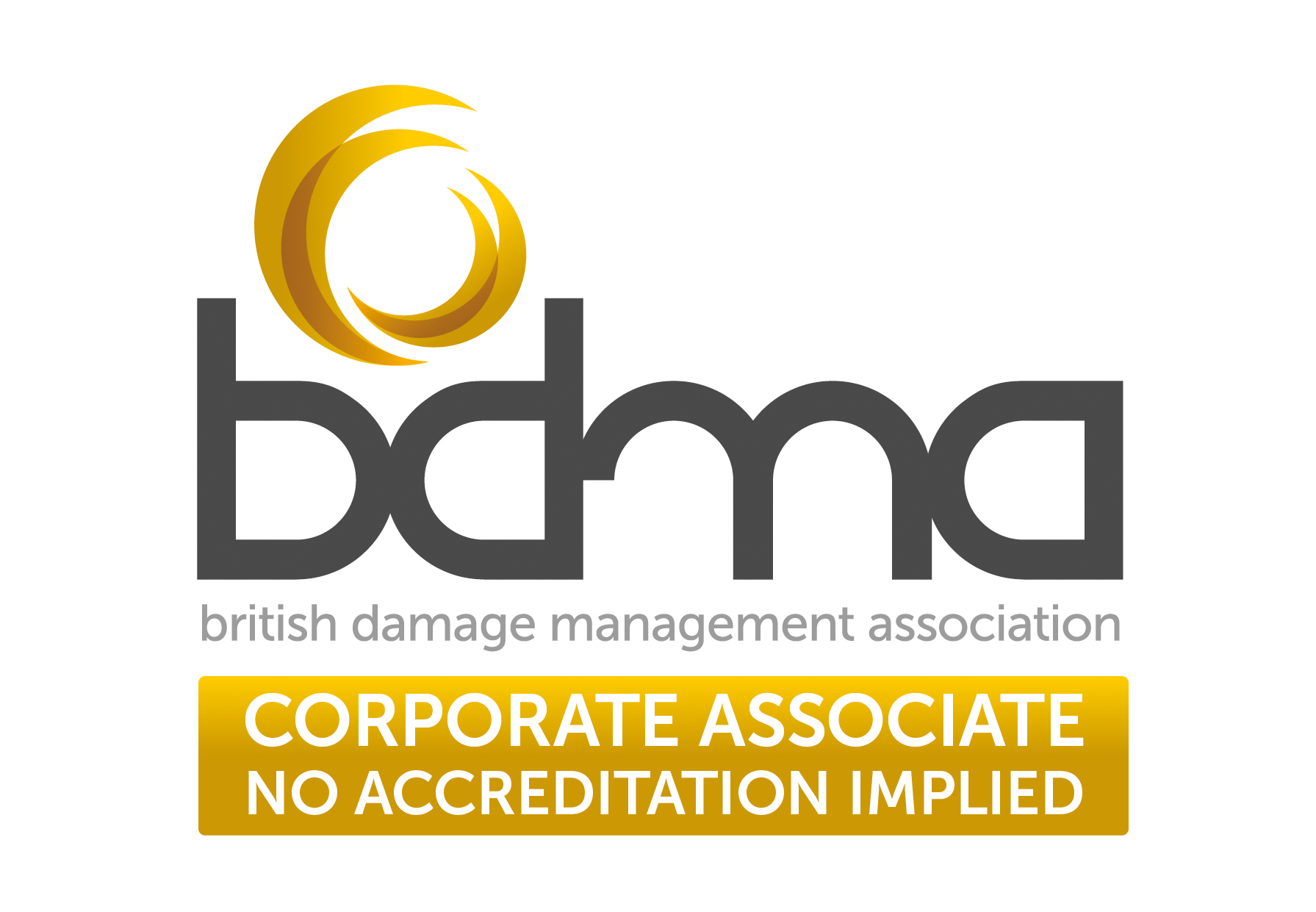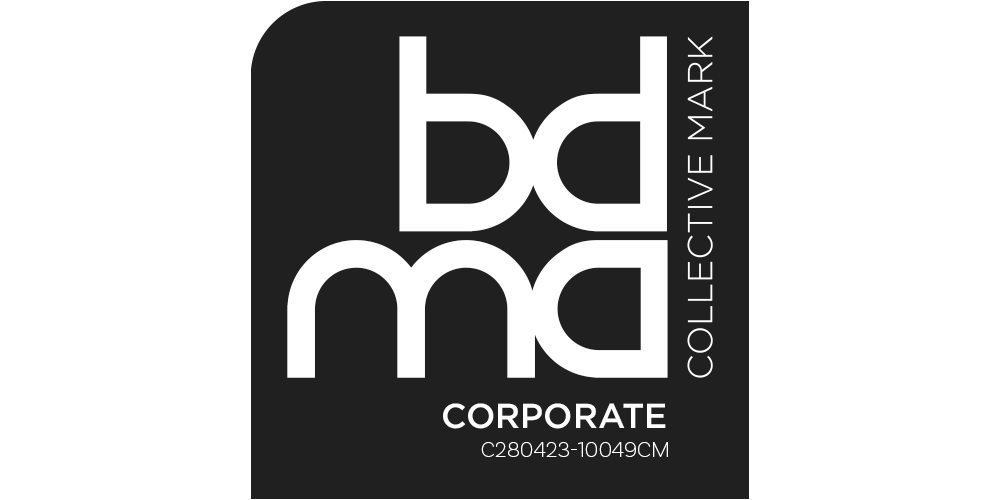Mould Remediation in a London Apartment
Background
We were contacted on the 22nd January 2021 regarding mould growth in a London apartment.
We were required to evaluate mould levels, establish reasons for the mould growth and identify ways to remove the mould and help prevent future growth.
Our inspection was carried out using visual inspections and a non-invasive, in depth moisture survey.
Outcome of Site Survey
The following details of the building were noted:
- The building was built in the 1930s and is currently split into multiple apartments.
- The building was built using bricks, the external brick wall is Flemish bond, meaning there is no wall cavity between the inner and outer brick leaf.
- There is a plaster finish to the inner brick leaf, onto either brick or block work.
- All windows and doors are double glazed.
- The subfloor is made of wood and covered with carpet or vinyl.
- The roof is a pitched timber frame construct, with tiles.
- There is a large water mark on the external brick wall at the front of the building. On inspection, it appears to be historical and has no impact on the apartment we inspected.
Rear Bedroom
Mould growth is visible mainly on the external side wall and partly on the external wall next to the window. The mould growth is particularly engrained on the external wall which had previously been covered by a bedroom cupboard. In some areas the mould is visible from floor to ceiling and has caused damage to the paintwork.
There is visible mould growth and condensation on the windows.
Elevated moisture readings were recorded along the walls with mould growth and damage.
Bathroom
There is visible black mould growth on the grout between the ceramic tiles, on the sealant around the bath and in between the vinyl floor coverings.
There are cracks on the ceramic tiles and visible moisture damage to the paint above the window. The hinges on the bathroom door have rust on them.
There is no extractor fan fitted in the bathroom.
Elevated moisture readings were recorded along the ceramic tiles and the bathroom floor.
There is visible mould growth and condensation on the windows.
There is also salt visible on the external brick leaf. Salt is an indication that water is evaporating from the brick walls. Salt at this height is usually efflorescent salts and are an indicator of water damage or leaks.
W/C
There is a visible water patch and mould growth on the external wall by the lead sewage waste pipe.
Elevated moisture readings were recorded in this area.
There is visible condensation and mould on the window.
Kitchen
There is visible mould growth to the lower part of the wall.
There is a washer dryer in the kitchen, which does not require venting. There is no extractor fan in the kitchen and the extractor hood above the over vents back into the kitchen.
No elevated moisture readings were recorded.
Front Bedroom
There is visible mould growth to the corner of the room where the external wall and dividing wall to another apartement meet. This mould growth was only noticed when contents were removed from the bedroom.
No elevated readings were recorded.
There was visible condensation and mould growth on the window.
Other rooms and areas in the apartment have some visible condensation and minor mould growth on the windows.
Some of the Images used as Evidence within the Mould Survey
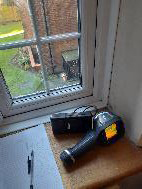
Mould growth on window and window return.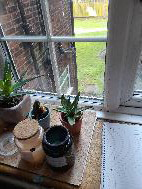
Condensation on middle bedroom window 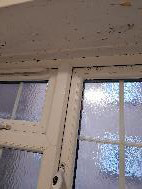
Water damage to head of bathroom window, visible condensation and mould growth 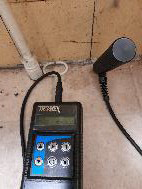
Elevated moisture reading to bathroom floor.
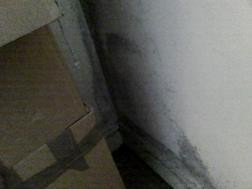
Mould growth to front bedroom external wall. 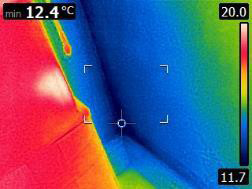
Thermal image of front bedroom external wall. 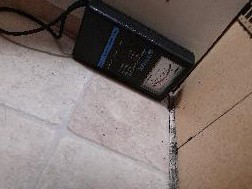
Elevated moisture reading to boxing below bath. 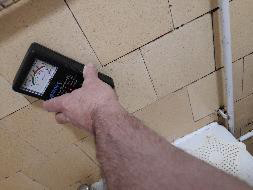
Black mould growth and elevated moisture reading to bathroom wall.
Our Mould Remediation Solution
We identified a number of reasons contributing to the elevated moisture readings and mould growth in the property.
- There is an escape of water or leaking pipe when the bath or shower is being used. This will need to be investigated as a priority.
- There is trapped moisture within the walls and under the flooring which will need to be fully dried out.
- The cooker extractor hood needs to be vented to the outside of the property.
- The rooms are cluttered which is restricting air movement, especially where contents and furniture is pushed up against the wall.
- Windows are not being opened when bathing and cooking resulting in moisture being trapped in the apartment. Windows need to be kept opened in order for the moisture to be able to escape from the property.
- The bathroom door is being left open after bathing/showering, causing moisture to become trapped in and around the apartment. After using the bathroom, the door should be closed and a window left open in order for moisture to escape.
- The heating is on a timer. It would be best practice to have this on constantly to maintain a comfortable background temperature.
- Clothes are being hung up to dry in the apartment. They should be hung up outside where possible or in a well ventilated area.
- Condensation is not being removed from windows and other areas in the apartment. This should be removed daily.
- Homes are considered at risk of condensation where the internal relative humidity (RH) is above 70% RH. The readings that were recorded in the apartment were between 74% RH and 77% RH. The water vapour is moving by diffusion from centres of high concentration, such as the bathroom and kitchen, to areas of low concentration, in this case the bedrooms and W/C where it is condensing on the cold walls, windows and in the W/C on the cold lead pipe.
Mould Remediation Plan
We will:
- install refrigerant dehumidifiers to lower the RH within the apartment to prevent further condensation problems These will be in place until the source of water damage in the bathroom is located.
- locate the source of water damage and elevated moisture readings to the bathroom and repair or make good the source.
- dry and remove the excess moisture from the bathroom. Flooring and tiles will need to be removed in order to do this.
- fit electrical extractor fans in the bathroom and kitchen, the fans will have humidistats.
- insulate the sewage waste pipe in the W/C.
- carry out mould remediation works. This will include the cleaning and removal of mould with an alkaline cleaning chemical. Removal of any paint or skimming of the wall plaster where the mould is still visible. All areas will then be treated with an anti-fungicidal agent.
Conclusion
The mould remediation process took two technicians two days to complete. Drying equipment was installed in the rear bedroom for 7 days to remove any trapped moisture in the external wall.
Once the mould remediation works were completed, the apartment was reassessed to see if certain areas would benefit from mould resistant paint being applied or walls being insulated prior to redecorating.
If you are experiencing mould growth within your property, call the Flood Doctor today on 0800 285 1447

